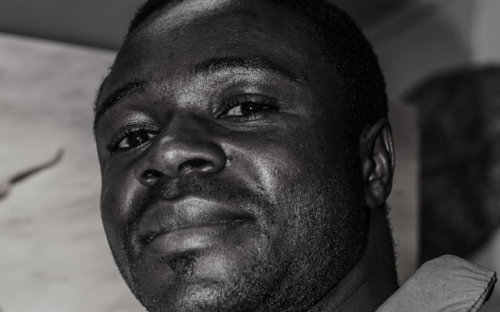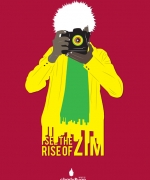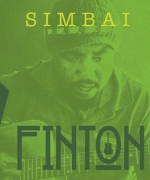Inspired by the San to create natural pigments
I was inspired by the San and how they would use different pigments to paint their lifestyle on walls. Their support was the rock and now in the contemporary world our support is the canvas and sometimes paper but from there, they didn’t have lots of pigments, hence their palette was very limited. It’s either they used black which they got from charcoal or reds from soils or blood. So, that got me to say, you know what; the more I experiment, the more I look for more colours probably the more I can expand the palette from what the bushmen used to work with; and also the way they preserved these pigments; they would use fat also to mix them with the different pigments, so that they would last longer on the rocks. But today we are now using canvas and it has got its ways of holding paint. We have linseed oils that are used and turpentine to make sure that the paints flow well on canvas. But with my pigments, I haven’t experimented with linseed oil. I’m still working to see how it would work well and use linseed oil as a vehicle. So, it’s still an experiment and this is where the inspiration has come from; from the Bushmen and how they would work with their pigments.
I’ve also been inspired by the landscape, fauna and flora of the Zimbabwean landscape. For example in spring, you have different flowers in bloom and I said; let me use this palette and see how it will work on canvas. You will find there is the rigours the come in bloom; they are very yellow and bright. You have the jacarandas; you have the teak; the teak flowers which are very nice and purple. So, all these; working with them; I said let me see how it would work and see what palette I could acquire from these. However, the more you use; event he colour that you use; suppose a flower is purple, you will think it will give you that same effect on water colour paper but the result might be very different. It will be an ugly grey colour.
So, there is a lot of experimentation that needs to be done on how I really could acquire different pigments; like pinks and purples. They are more like related and from blues and reds from berries that you also find around; it’s all those things that I still need to experiment and so far there’s been so many surprises. One colour that I would think I would get from a red rose for example; is totally different from what I would get when I use it no paper. A red rose, if you apply it on water colour paper, you get a purple pigment; and you think you would get red from those. Rather, red you get it actually from mulberries that are not yet fully ripe; that are not yet like black or purplish; and then that’s where you get a red.
So, it’s a lot and it’s exciting and I’m learning. It’s like I’m trying to get to understand the behaviours of these different flowers, as far as the organic pigments are concerned. With soils, it’s a different story all together. What you see is what you get. Its matter of now how to preserve them so that they remain as they are. That is where I got my inspiration from the bushmen and then see how far I could extend their palette. Since the San there has been a huge gap of silence. No one has been experimenting with natural pigments. It was now when what we call 'contemporary art', after colonisation, the westerners came with their art materials which they introduced us to those and we just started using them. I just want to go back in time and see where we can start. Its like pick up from where our fore fathers left. If there is anything that will push me its that inspiration, and see what nature is surrounding us with and all those colours, then start to use them and experiment and to extend my palette which I am still yet to name.
Read More on the Journey to new pigments
Zimbabwean Creating Pigments For Painting




